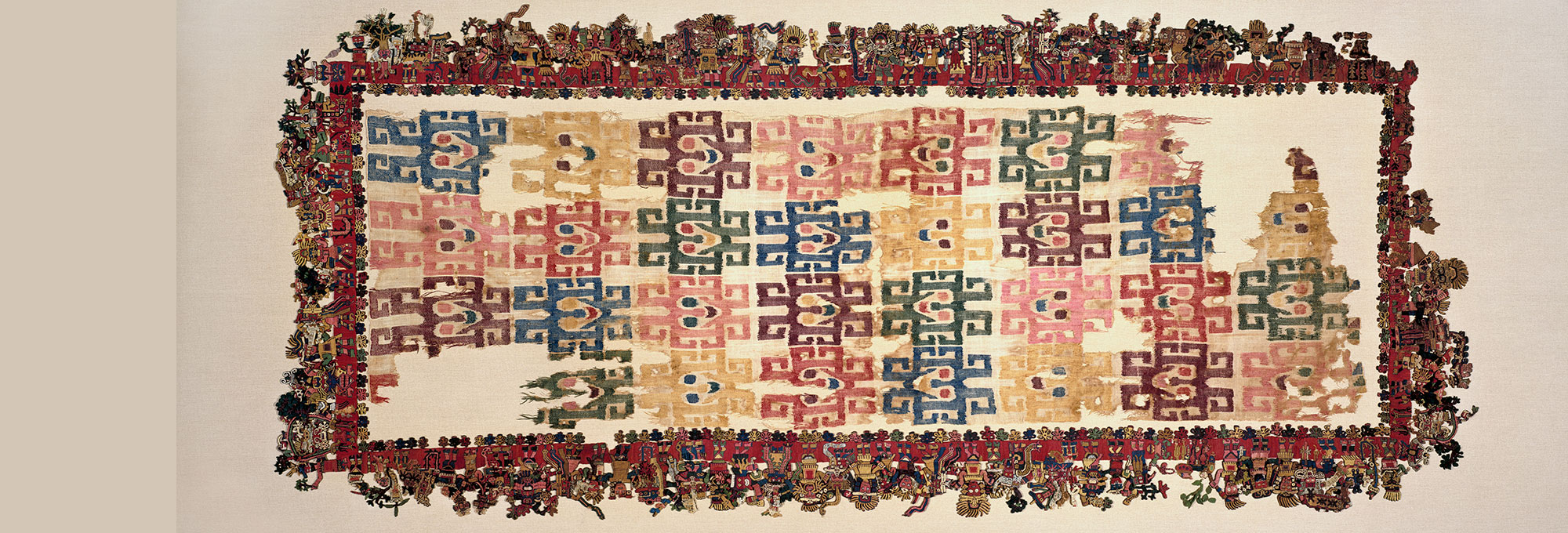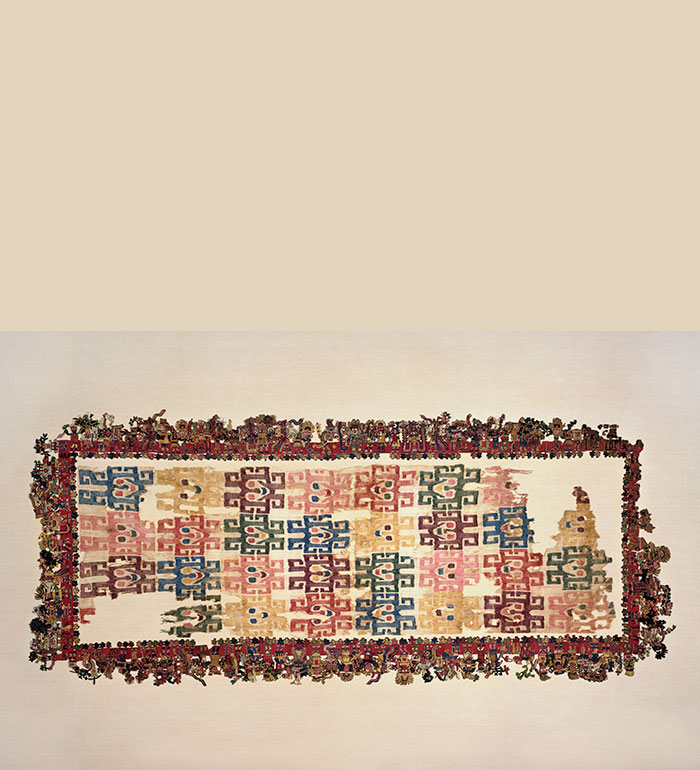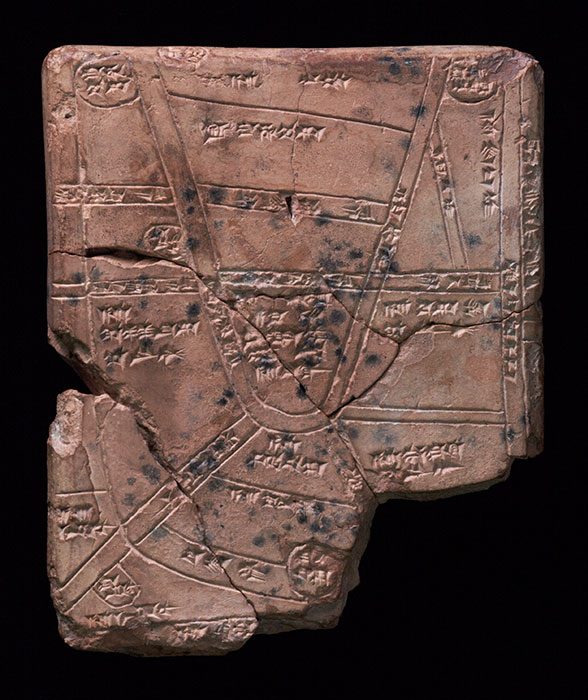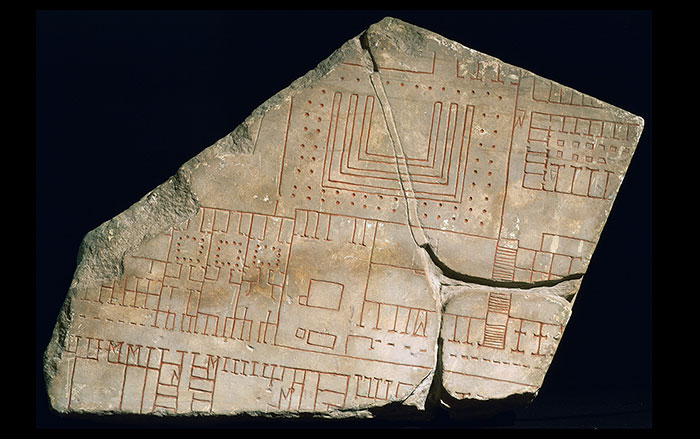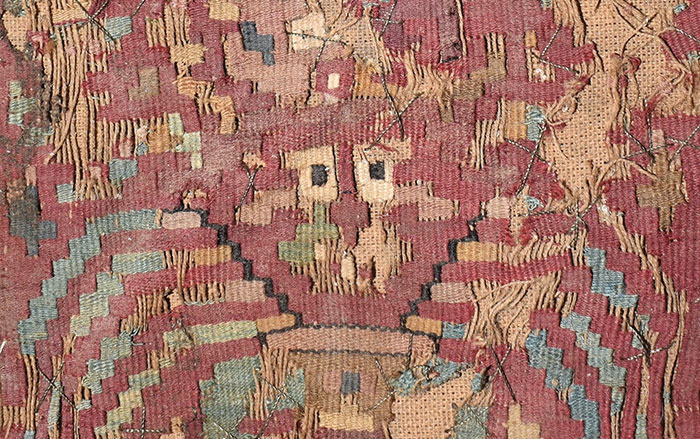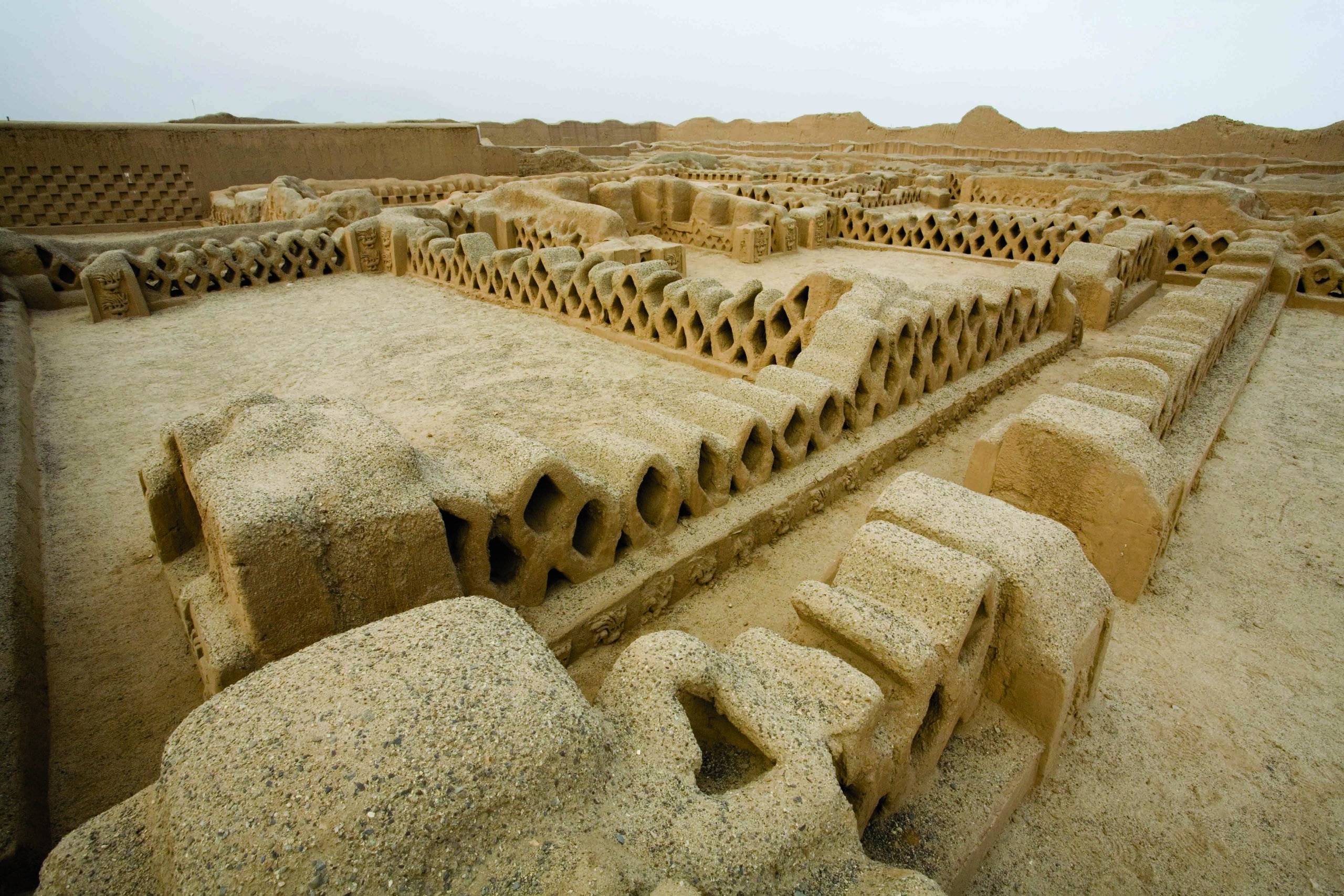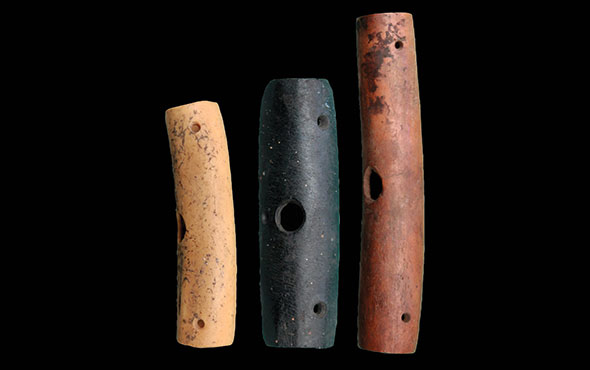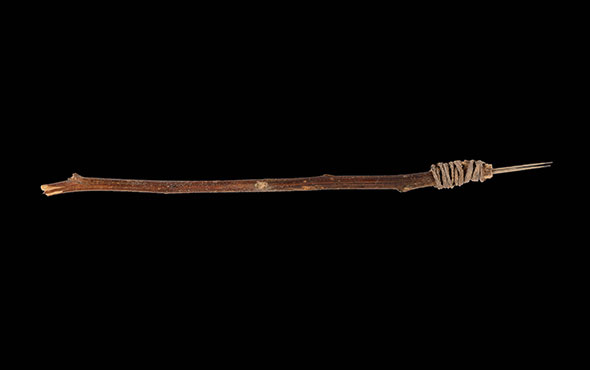For some people in the ancient Andes, textiles could serve not only as a record of their physical surroundings, but also as guides to aid in the transition to the next world. This textile, which was likely wrapped around the head of a member of the pre-Columbian Nazca culture of Peru when he or she was buried, “represents a record of what life was like on Peru’s south coast 2,000 years ago,” says curator Nancy Rosoff of the Brooklyn Museum. The pattern at the center of the textile repeats a large-eyed, grinning figure thought to depict a supernatural being. The outer border shows a procession of 90 individual figures, each adorned in distinct regalia. Many carry animals and plants native to the surrounding area or found farther afield.
The mantle might also be seen as a map representing the Andean concept of cyclical time, according to geographer William Gartner of the University of Wisconsin–Madison. The figures on the textile’s border illustrate the movement of people around a village plaza. With the cloth wrapped around his or her head, says Gartner, the deceased individual would have been able to join in this symbolic procession, which carries on in perpetuity.



